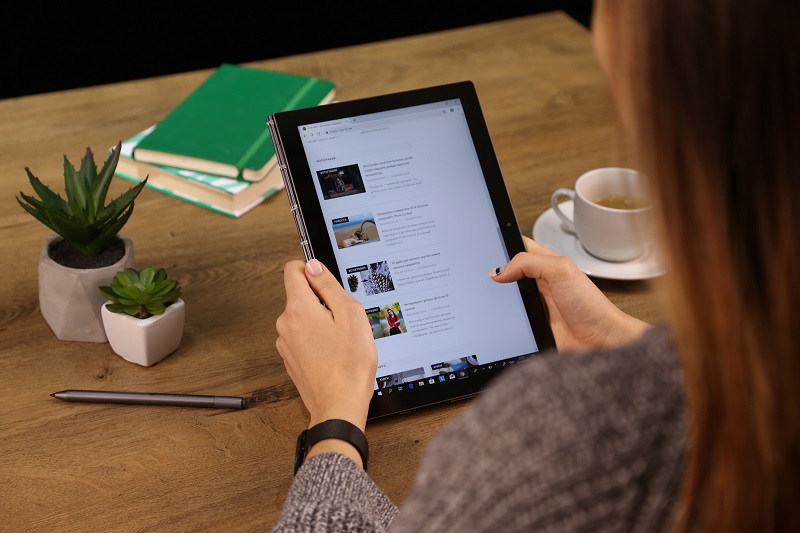Newspaper headlines influence online news search and engagement
Author: Martha Villabona works at Centro Nacional de Innovación e Investigación Educativa (CNIIE) of the Spanish Ministry of Education and Vocational Training, where she coordinates the area of multiple literacies.

In the digital world, news are multiplying and causing readers to only choose those headlines that most interest them. This does not happen randomly or by chance, as there is an influence of the headlines guiding people to search for certain information; this was already described in the literature 1.
In the latest years, research in this matter has evolved towards the study of digital news production and the evolution of written journalism practices, such as news writing “on demand”. One of the latest studies by Sacco and Muddiman 2 analizes the different effect of two types of headlines: “curiosity headlines” and “traditional, summarized news headlines” .
Traditional headlines are a summary of the content whose main characteristic is that they avoid ambiguity; they are perceived by the public as objective and introductory to quality information. Curiosity news headlines focus on generating interest rather than providing relevant information. The digital news broadcaster seeks to encourage audience participation by using curiosity as the main element since it points to emotion, intensity and personality. These are the headlines that have begun to prioritize the media because they are interested in the “clickbait”, a term that describes sensationalist headlines whose aim is to encourage the curiosity of the audience by exaggerating or misleading them into clicking on a link.
To analyze the influence of both types of headlines, the authors tested a theoretical model of information that focuses on the presentation of headlines and what those headlines are capable of causing, such as whether or not they interact with the news. To do this, they conducted two studies and established three steps to finding out the effects of headlines.
The first step evaluated the appropriateness of the information provided after viewing the information. In turn, suitability is linked to the uncertainty that arises from the discrepancy between the desired information and the quality of that information sought;
On a second step, the participants generated expectations about the quality of the information after reading the headline;
In the final step participants decided whether or not to participate in the digital headlines according to the expectations of adequacy of the information. If the information was adequate, the participants were committed to the information. If that was not the case, they would of have avoided reading the information.
The first study included 2057 participants who analyzed three headlines independently. Each participant was presented randomly to take into account the effects of order. The type of headline presented was one of “summary” (e.g. The economy about to grow) and the other two of “curiosity”, one of direct reference that lacked some content (Why the economy is going to grow) and another of question (Is the economy going to grow?). The authors measured the judgments on information quality and clarity from the questions they asked each participant about each headline, as well as the appropriate expectation of the news and its interaction with the content.
In this study the authors found readers perceived a poor adequacy of the headline information and had low expectations of the news information. Therefore, the readers did not commit to the information because the headline did not meet their expectations.
The second study consisted of testing the participation in local news in the United States during the 2016 primary and general elections. This field test consisted of examining the pages viewed in 5288 political headlines to see if the lower participation rate predicted by the “curiosity” headlines in the first study also matched people’s actual participation when they read news online. In this study, “curiosity” headlines did not achieve the expected effect: more interaction and dissemination. They received fewer page views than “summary” headlines (5324 vs 6701).
Although this study had certain limitations, in contrast with other studies this study showed that news with “summary headlines” had more views than news with “curiosity headlines”.
In conclusion the media should not always encourage the use of sensationalist headlines to catch the attention from the readers to obtain more visits to a webpage. It is a fact that “click bait” works well with certain topics of public interest but not with all. Future studies with optimal methodology and design are needed to better understand and differentiate the different factors: individual motivations, interests, type of information in which “curiosity” or “traditional summary” headlines would be more efficient in catching readers attention.
References
- Graber, D. A. (1984). Processing the News: How to People Tame de Information Tide. New York: Longman ↩
- Scacco, J. M. & Muddiman, A. (2019). The curiosity effect: Information seeking in the contemporary news environment. New Media & Society doi: 10.1177/1461444819863408 ↩